The lush island of the sun, as Rhodes is commonly known, enchants visitors with its blue waters, charming villages, and delicious food. Baltic Outlook writer Una Ulme becomes acquainted with the local culture and also the best beaches on the island.
It’s the middle of May, and there’s plenty of sunshine on Rhodes. Just a week ago, however, it was cool and windy here. ‘You’re very lucky you came here at this moment,’ says everyone we meet. A few degrees cooler seems cold for the locals, while for us it’s perfect weather. We’ve rented a villa with a view of the sea, but we have to drive along winding mountain roads to find it. We seem to have lost our way, when suddenly a young guy on a scooter pulls out in front of our car and shows us the way. Later, after exchanging a few words with the owner of the villa, he gives us the address of the first restaurant we visit on this island.
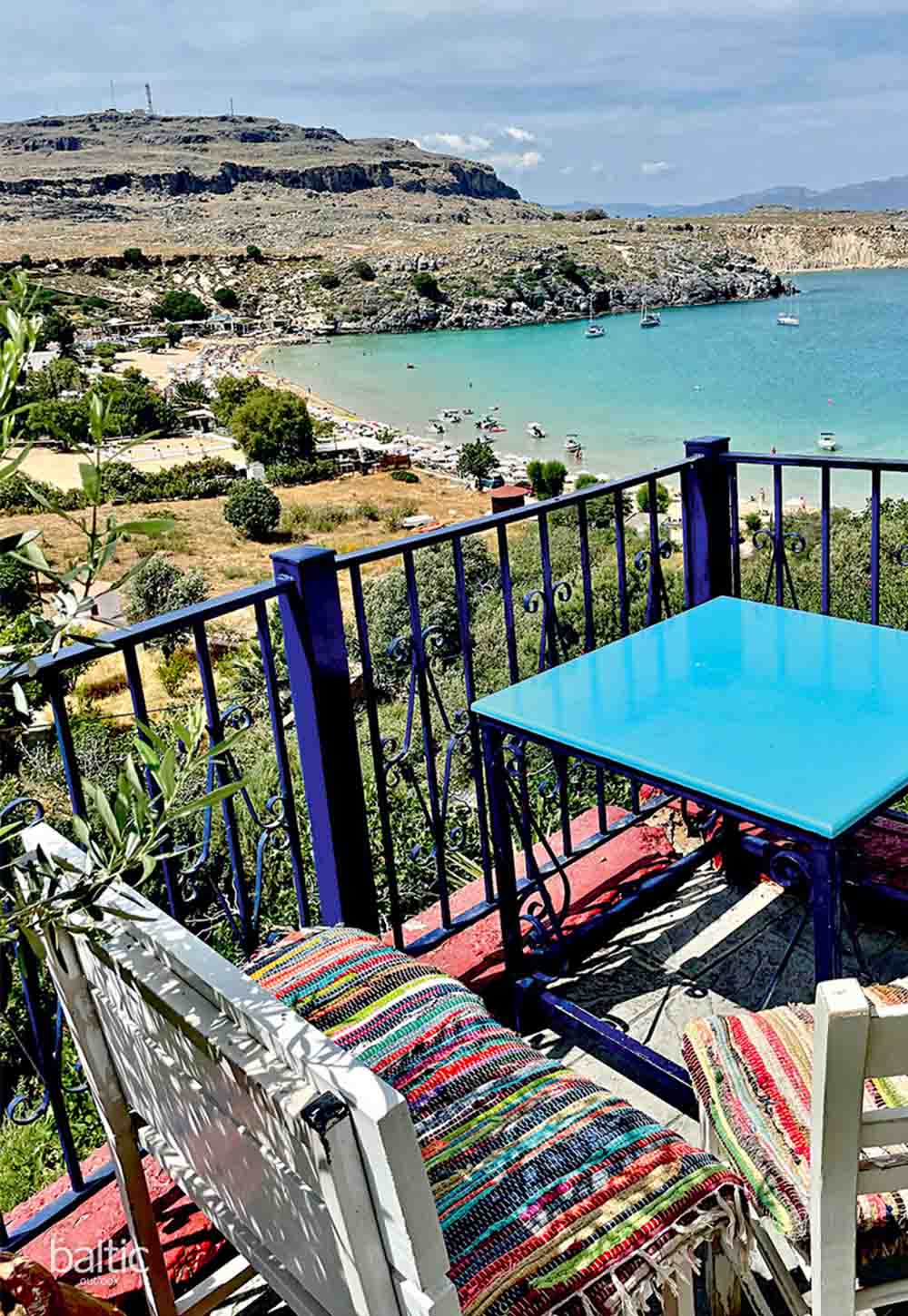
I want to try everything, but I decide on the sea urchin salad. The waiter does not bring me a salad. Instead, I receive a plate of about ten sea urchins, shelled and processed. I enjoy this delicacy of the sea immensely and think to myself: nowhere in the world will they bring me ten sea urchins without salad for the price of one.
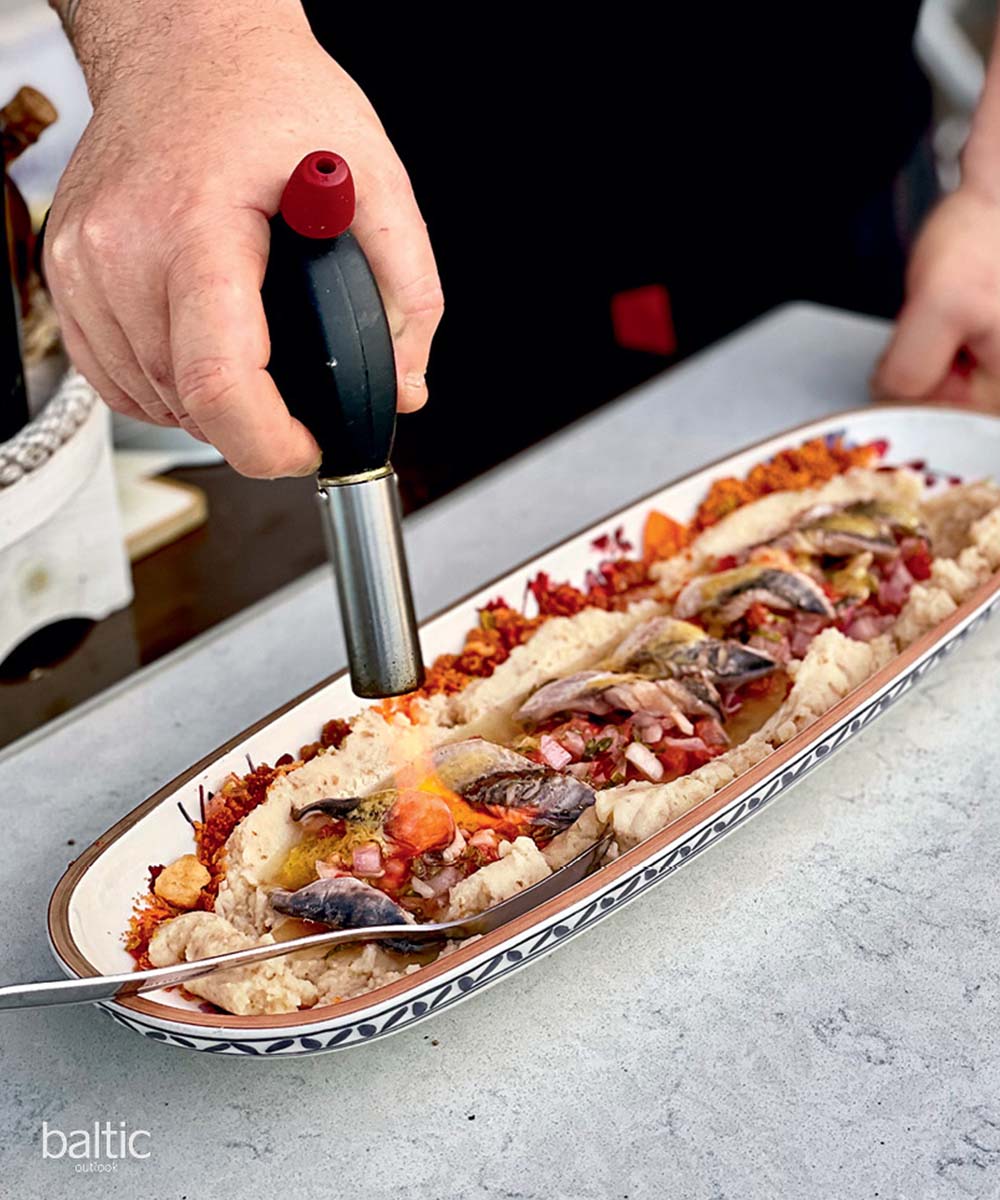
The restaurant, Kapari Fish & Sea, sits right on the seafront, and we watch the colours of the sunset as we dine. We’re staying in the small village of Afantou. There are a few hotels here, on the coast and in the centre of the village, where there are also several shops and restaurants. Because the island of Rhodes is relatively small, it doesn’t make much difference where one stays. It all depends on preference. Our location is perfect in that we’re located between the two main attractions of Rhodes Town and Lindos, which turns out to have been the right decision, as we end up returning to both places several times.
Surrounded by beautiful seas
The island of Rhodes is unique in that it is surrounded by the Mediterranean Sea to the east and the Aegean Sea to the west. The west side of Rhodes is windy, so the hotels and villas there are sometimes recommended during the hottest months of summer (July and August, when temperatures can reach 40 degrees Celsius). It’s true that the tourist infrastructure is not as developed there as it is on the east side, but this gives visitors the opportunity to discover the island’s pristine beauty.
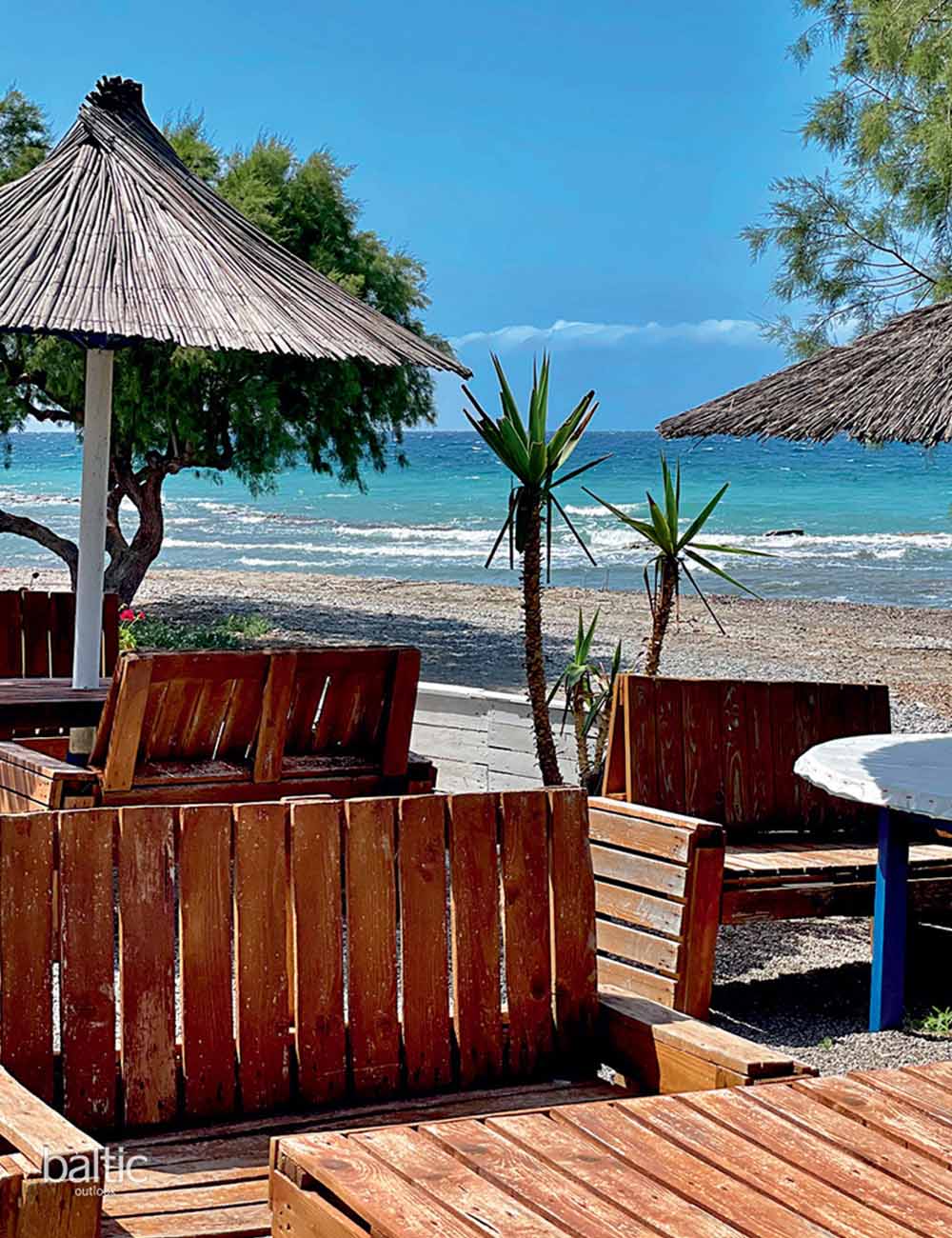
The west side of the island has more fertile land, steep cliffs, beautiful sunsets, and, thanks to the wind, is popular with kiteboarding and windsurfing enthusiasts. Meanwhile, those who prefer a more leisurely lifestyle favour the east side. Locals, however, lament that the type of visitor to the island has changed in recent years: in the past, tourists were more active, visiting various parts of the island and thus supporting local businesses. ‘Lazier’ visitors tend to spend most of their time at all-inclusive hotels, perhaps leaving the immediate neighbourhood only for a short shopping spree.
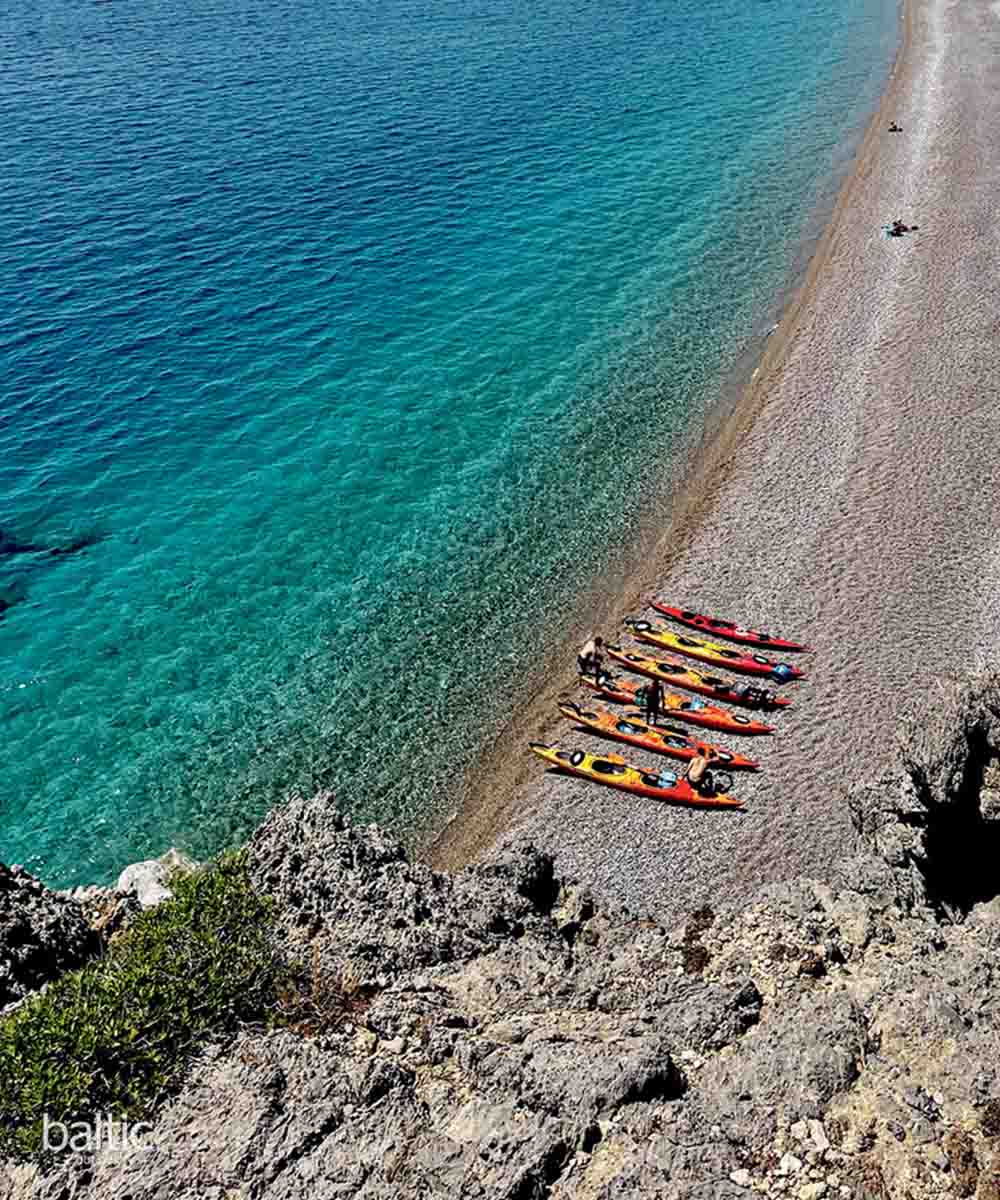
Rhodes is a small island, only 80 kilometres long, so you don’t have to spend much time getting from one attraction to the next. The Old Town of Rhodes sits at the north end of the island. Our accommodation lies in the middle of the island, and the Old Town is only 30 kilometres away. Parking is a problem, though, because parking is prohibited in many places, but everybody parks everywhere nonetheless. We squeeze into a small space and hope for the best.
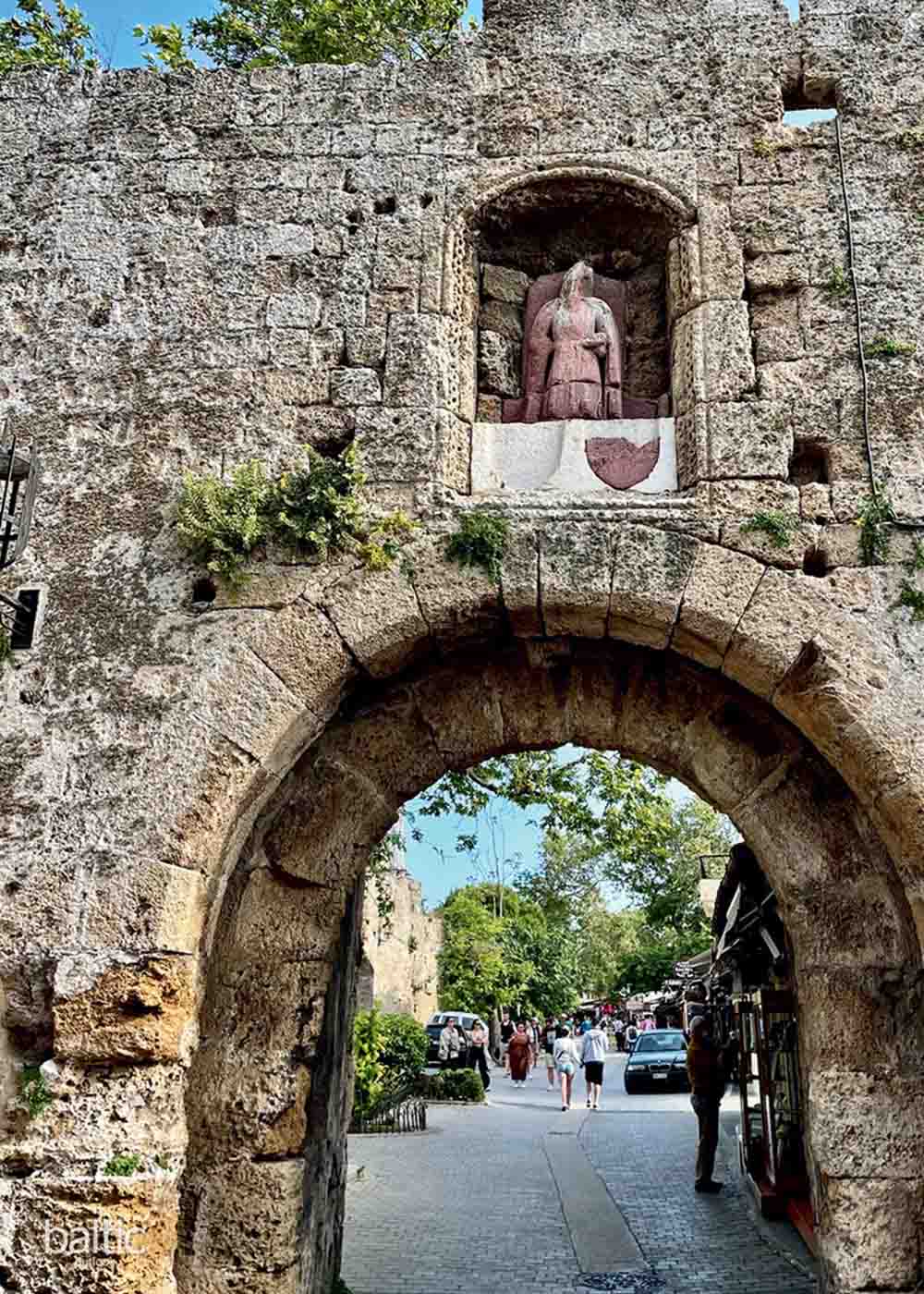
Beach days
The first thing one notices when entering the Old Town is the cobblestones. The little sea stones are so smooth that your feet slip when you step on them. It turns out that these cobbles have been here since the 15th century. The second surprise is the street cats. I love cats dearly, but these here look quite pathetic. When I ask why there are so many cats around, I’m told it’s because the locals love them so much. But they’re strays! Exactly. Everybody owns them, because cats go where they like. Then I notice a bowl of cat food outside the door of almost every house, and I understand that this is truly the case.

As I wander through the narrow streets of the Old Town, peeking into the miniature courtyards, popping into the shops, or sitting in a café, my sense of time disappears and I’m able to enjoy the feeling of ‘here and now’. The town of Lindos evokes a similar feeling. It lies 55 kilometres from Rhodes Town and is, along with Ialysos and Kameiros, one of the historic trio of ruling towns on the island. However, the three towns could not agree on which of them would be the most important, so they compromised and built a new town, Rhodes.
Lindos has even narrower streets than Rhodes, but here it’s impossible to get lost, because sooner rather than later you’ll find yourself on the main street leading to the acropolis, the most magnificent and beautiful such structure on the island. In the past, Lindos was the island’s main commercial centre, and trade is still going strong today. As well as souvenirs, you’ll find tasteful clothing and accessories by Greek designers, beautiful crockery, jewellery, and local delicacies.

Combine a visit to Lindos with a relaxing day at one of the three beaches near the town. My favourite is Mikros Gialos Beach along St. Paul’s Bay, with its crystal-clear water and comfortable beach beds set up on several levels along the cliffs. Most of the beaches on Rhodes are rocky, so it’s advisable to buy special water shoes to make going in the water more comfortable. The most popular sandy beach on the island is Tsambika Beach, with a shallow and gentle shoreline and many bars. I also love Kalathos Beach, which is away from the hustle and bustle and appeals to those who appreciate peace and quiet.
Those who don’t fancy lounging on the beach or by the pool all day can explore the island’s natural diversity. Cycling is popular, and there are several trekking routes. Kayaking with an instructor is also available. We book a five-hour tour, and at first I wonder whether that will be too difficult, but it isn’t. From a kayak, you not only see the island from the sea but also get to peek inside picturesque caves and grottoes. The more adventurous can even get the adrenaline pumping by jumping off a cliff into the water. Our trip costs around EUR 75 for two and is only offered by one company on the island, Trekking Hellas, which is also the only company organising trekking routes.

Rhodian cuisine
After an active day, it’s time for a nice dinner. Rhodians are real foodies, and we are never once disappointed by the food served here. If you want to try the local cuisine, head to a taverna. A kafenio is where the locals congregate, although mainly men, who have a tradition of getting together in the evenings to have a coffee or something stronger and discuss the events of the day or watch some sports. A cafeteria is a classic coffeehouse in the modern sense.
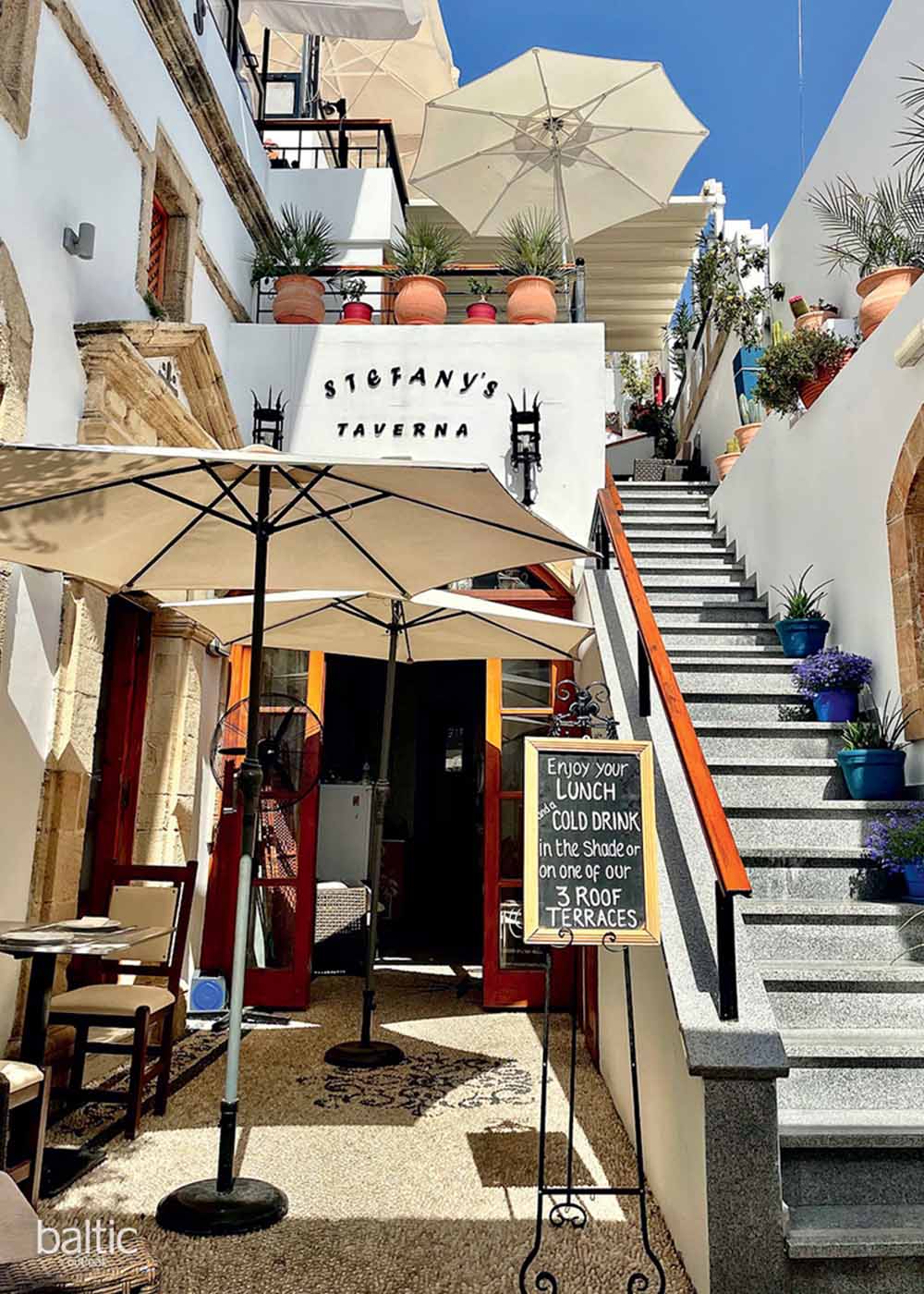
When it comes to food, it’s so delicious here that I find it difficult to put into words. Rhodian cuisine follows the basic principles of the Mediterranean diet and is heavy on seafood, vegetables, olive oil, greens, and fruit. That’s why the Greeks generally live long lives, despite eating a lot, late at night, and supplementing their meals with wine. There are many must-try dishes, starting with the Greek salad we know so well. I have no idea what secret ingredient the Greeks add to these salads, but they taste completely different in Greece. Perhaps it’s the feta cheese, which is really excellent here due to the long local tradition of making the cheese. It’s stored in wooden barrels filled with brine, and during this maturing process the cheese acquires its unique flavour and aroma.
Wine, the sacred drink of Dionysus, is of good quality here. The local winemakers, however, complain that restaurants lack an understanding of wine grading – cheap table wine is sold at the same price as premium products, so it’s worth becoming acquainted with local wineries to understand what to choose. A visit to Kounaki, one of the island’s leading wineries, where the owner is trying to bring innovations to the winemaking tradition, reveals that the biggest problem is a lack of refrigeration facilities. To prevent the wine from becoming too sweet, the grapes need to be chilled after harvesting, followed by a complex fermentation process. But not all winemakers can afford or know how to do this.
Throughout my trip, the smile never leaves my lips. From the sun, the kindness of the locals, and yes, also the wine.
Read more about Rhodes in Baltic Outlook.
Text by Una Ulme